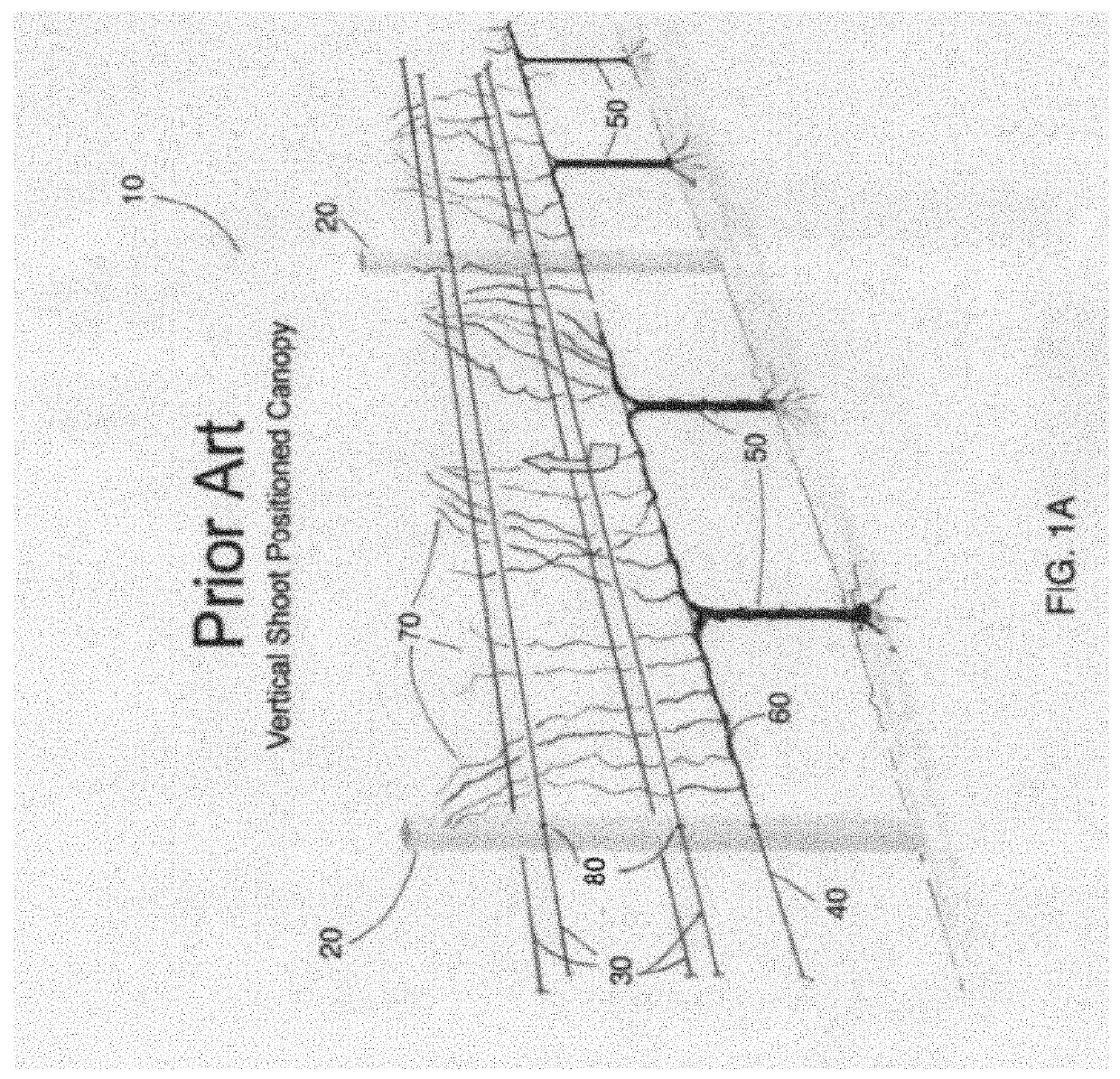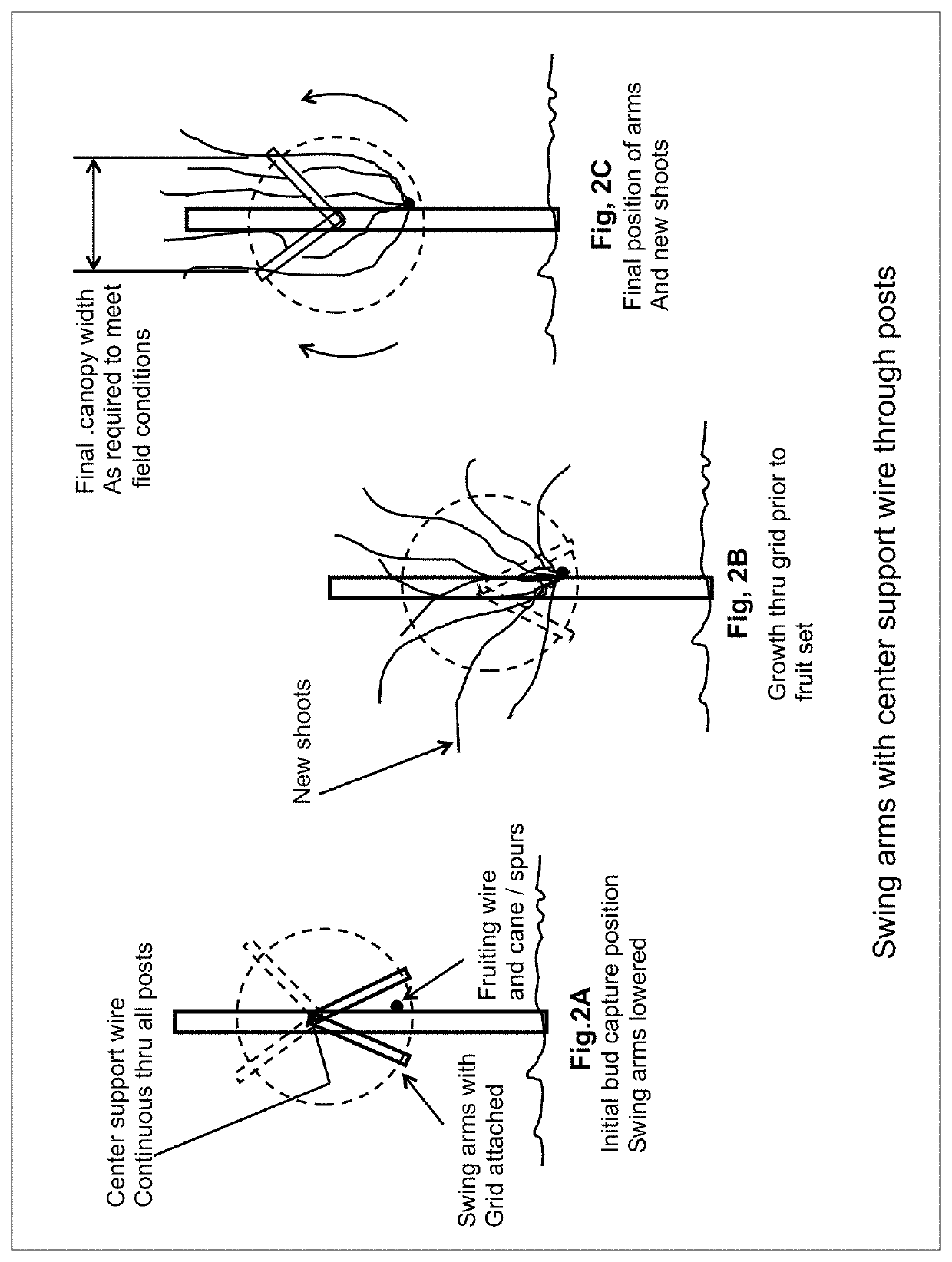Swing arm training system for vines
a vine and arm training technology, applied in the field of vine arm training systems, can solve the problems of poor color, poor sun protection effect, and impaired color, and achieve the effect of attracting maximum sunlight and less labor
- Summary
- Abstract
- Description
- Claims
- Application Information
AI Technical Summary
Benefits of technology
Problems solved by technology
Method used
Image
Examples
Embodiment Construction
[0122]In this section the new inventive methodology will be applied and the resulting benefits will be evident. When the new method is applied to training grape vines it is preferably referred to as the Swing Arm Training System. In the drawings, the same reference numerals indicate like elements throughout the several figures, as follows:
[0123]10 Canopy
[0124]20 Post
[0125]30 Catch wire
[0126]40 Fruiting wire
[0127]50 Grape vine trunk
[0128]60 Cordon or cane
[0129]70 Shoots
[0130]80 Post clip
[0131]100 Grid
[0132]110 Transverse element of grid
[0133]120 Longitudinal element of grid
[0134]170 Grid clip
[0135]180 End joint (male)
[0136]190 End joint (female)
[0137]195 Grid socket for catch wire
[0138]800 Flow chart illustrating method of use
[0139]The SATS shoot positioning system is a concept that improves both quality and production costs over the existing methods because it provides lateral support to vine shoots 70 as opposed to the prior art of only providing vertical support. In addition, it f...
PUM
 Login to View More
Login to View More Abstract
Description
Claims
Application Information
 Login to View More
Login to View More - R&D
- Intellectual Property
- Life Sciences
- Materials
- Tech Scout
- Unparalleled Data Quality
- Higher Quality Content
- 60% Fewer Hallucinations
Browse by: Latest US Patents, China's latest patents, Technical Efficacy Thesaurus, Application Domain, Technology Topic, Popular Technical Reports.
© 2025 PatSnap. All rights reserved.Legal|Privacy policy|Modern Slavery Act Transparency Statement|Sitemap|About US| Contact US: help@patsnap.com



